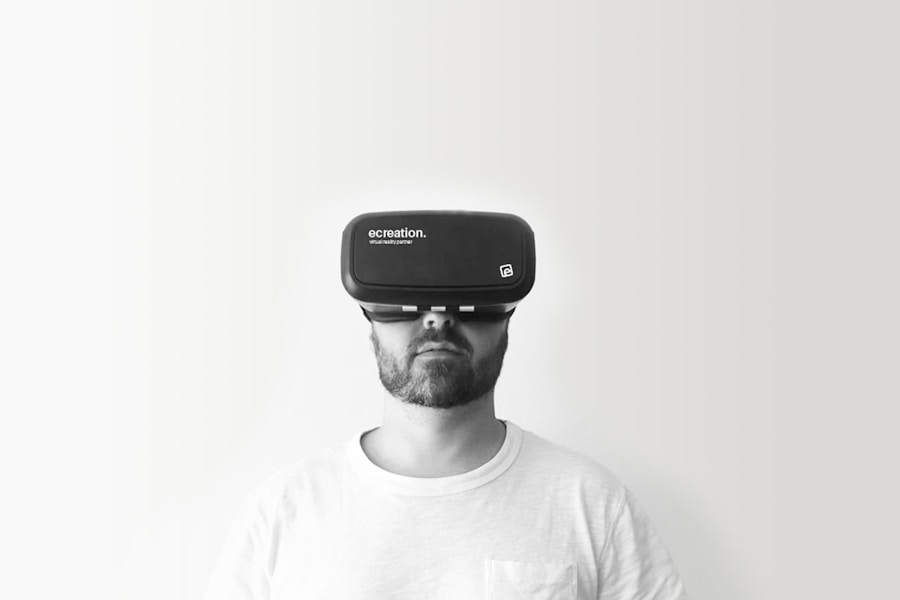Download links
How to install Exploring the Virtual Life: An Immersive Experience APK?
1. Tap the downloaded Exploring the Virtual Life: An Immersive Experience APK file.
2. Touch install.
3. Follow the steps on the screen.
Description
Virtual reality (VR) has emerged as one of the most transformative technologies of the 21st century, reshaping how we interact with digital environments and each other. At its core, VR is a computer-generated simulation that immerses users in a three-dimensional space, allowing them to experience and interact with that environment as if it were real. This technology has evolved significantly since its inception, moving from rudimentary simulations to highly sophisticated experiences that engage multiple senses.
The allure of VR lies in its ability to transport users to entirely different worlds, offering experiences that range from thrilling adventures to serene explorations of nature. The applications of virtual reality are vast and varied, spanning entertainment, education, healthcare, and beyond. In gaming, for instance, VR has revolutionized how players engage with their favorite titles, providing a level of immersion that traditional gaming platforms cannot match.
Beyond entertainment, VR is being harnessed for training purposes in fields such as medicine and aviation, where realistic simulations can prepare individuals for real-world scenarios without the associated risks. As technology continues to advance, the potential for VR to enhance our daily lives and reshape our understanding of reality becomes increasingly apparent.
Key Takeaways
- Virtual reality (VR) is a computer-generated simulation of an environment that can be interacted with in a seemingly real or physical way.
- The evolution of virtual life has seen advancements in technology, graphics, and user experience, leading to more immersive and realistic virtual environments.
- Immersive experiences in VR can include gaming, education, training, and therapy, providing users with a sense of presence and engagement.
- VR has the potential to impact society in areas such as healthcare, education, entertainment, and social interaction, offering new opportunities and challenges.
- The future of virtual life holds promise for continued innovation, with advancements in hardware, software, and content creation shaping the VR landscape.
The Evolution of Virtual Life
The Early Beginnings
The origins of virtual reality can be traced back to the 1960s with the invention of the Sensorama, a multi-sensory machine that provided users with a simulated experience of riding a motorcycle through the streets of Brooklyn. This early attempt at creating an immersive experience laid the groundwork for future developments in VR technology.
Advancements in Technology
The 1980s saw the introduction of head-mounted displays and motion tracking systems, which allowed users to interact with virtual environments in more dynamic ways. As technology progressed into the 1990s and early 2000s, VR began to gain traction in various industries. The development of more powerful graphics processing units (GPUs) and advancements in computer science enabled the creation of more complex and visually stunning virtual worlds.
The Rise of Virtual Life
Games like Second Life allowed users to create avatars and interact in a persistent online world, blurring the lines between reality and virtuality. This era also saw the rise of virtual reality headsets like Oculus Rift, which reignited interest in immersive experiences. The combination of improved hardware, software, and user-generated content has led to a flourishing ecosystem where individuals can create, share, and explore virtual spaces together.
Immersive Experiences in Virtual Reality

Immersive experiences are at the heart of what makes virtual reality so compelling. Unlike traditional media forms that present information passively, VR engages users actively, allowing them to explore environments and interact with objects in ways that feel natural and intuitive. This level of immersion can evoke strong emotional responses, making experiences more memorable and impactful.
For example, VR has been used in therapeutic settings to help patients confront phobias or manage anxiety by simulating situations in a controlled environment. One notable application of immersive experiences is in education. Virtual reality can transport students to historical sites or distant planets, providing them with firsthand experiences that enhance learning.
For instance, programs like Google Expeditions allow educators to take their students on virtual field trips to places like the Great Wall of China or the surface of Mars. These experiences not only make learning more engaging but also cater to various learning styles by combining visual, auditory, and kinesthetic elements. In the realm of entertainment, VR has opened up new avenues for storytelling.
Filmmakers are experimenting with 360-degree videos that allow viewers to choose their perspective within a narrative. This interactive storytelling format challenges traditional cinematic conventions and invites audiences to become active participants in the story. Games like Beat Saber and Half-Life: Alyx exemplify how immersive gameplay can create a sense of presence that traditional gaming cannot replicate.
Players find themselves physically moving within the game space, enhancing their connection to the virtual world.
Virtual Reality and Its Impact on Society
| Metrics | Data |
|---|---|
| Number of Virtual Reality Users Worldwide | 171 million in 2018 |
| Projected Number of Virtual Reality Users Worldwide by 2023 | 216 million |
| Virtual Reality Market Size | 16.8 billion in 2019 |
| Projected Virtual Reality Market Size by 2025 | 62.1 billion |
| Virtual Reality Impact on Healthcare | Improvement in surgical training and patient treatment |
| Virtual Reality Impact on Education | Enhanced learning experiences and student engagement |
| Virtual Reality Impact on Entertainment | Immersive gaming experiences and virtual concerts |
The impact of virtual reality on society is profound and multifaceted.
Virtual meetings have gained popularity as remote work becomes increasingly common; platforms like Spatial and AltspaceVR allow users to meet in virtual environments that mimic real-world interactions.
This shift not only enhances collaboration but also fosters a sense of presence among remote teams, bridging geographical divides. Moreover, VR has significant implications for mental health and well-being. Therapeutic applications are gaining traction as mental health professionals recognize the potential of VR in treating conditions such as PTSD, anxiety disorders, and depression.
By immersing patients in controlled environments where they can confront their fears or practice coping strategies, therapists can facilitate healing in ways that traditional methods may not achieve. Research has shown promising results in using VR for exposure therapy, where patients gradually face their fears in a safe space.
As individuals spend more time in virtual environments, concerns about data security and personal privacy become paramount. The immersive nature of VR can lead to addictive behaviors as users may prefer virtual interactions over real-life connections. Striking a balance between enjoying the benefits of virtual life while maintaining healthy relationships with the physical world is an ongoing challenge that society must address.
The Future of Virtual Life
Looking ahead, the future of virtual life appears both exciting and uncertain. As technology continues to advance at an unprecedented pace, we can expect even more sophisticated VR experiences that blur the lines between reality and simulation. The integration of artificial intelligence (AI) into virtual environments could lead to more personalized experiences tailored to individual preferences and behaviors.
Imagine a virtual assistant that learns your habits and preferences within a VR space, enhancing your interactions and making your experience more enjoyable. Furthermore, advancements in haptic feedback technology promise to enhance immersion by allowing users to feel sensations within virtual environments. Companies are developing gloves and suits equipped with sensors that simulate touch, enabling users to interact with virtual objects as if they were real.
This could revolutionize industries such as gaming, training simulations, and even remote collaboration by providing tactile feedback that enhances realism. The concept of the metaverse—a collective virtual shared space—has gained traction as tech giants invest heavily in creating interconnected digital worlds where users can socialize, work, and play seamlessly across platforms. This vision encompasses not only gaming but also commerce, education, and social interaction within immersive environments.
As we move toward this interconnected future, questions about governance, accessibility, and inclusivity will become increasingly important.
Tips for Exploring the Virtual World

For those eager to dive into the world of virtual reality, there are several tips to enhance your exploration experience. First and foremost, invest in quality hardware that suits your needs—whether it’s a standalone headset like the Oculus Quest or a high-end PC setup for more demanding applications. Comfort is key; ensure your headset fits well and is adjusted properly to avoid discomfort during extended use.
Familiarize yourself with various VR platforms and applications available on the market. From social spaces like VRChat to educational tools like Engage or immersive games like Boneworks or No Man’s Sky VR, there is a wealth of content waiting to be discovered. Take your time exploring different genres and experiences; you may find unexpected interests along the way.
Engage with communities dedicated to VR exploration; forums and social media groups can provide valuable insights into new releases or hidden gems within the virtual landscape. Participating in discussions can also enhance your understanding of best practices for navigating these digital realms safely. Lastly, remember to take breaks during your VR sessions.
Immersion can be intense; stepping away periodically helps prevent fatigue or discomfort while allowing you to process your experiences fully. By following these tips, you can embark on an enriching journey through the ever-expanding universe of virtual life.
If you are interested in exploring the world of virtual life, you may also want to check out this article on a free PDF viewer for Android in 2021. This tool can be useful for accessing digital content related to virtual reality and other online experiences. You can read more about it here.
FAQs
What is virtual life?
Virtual life refers to the experience of living and interacting in a digital or virtual environment, often through the use of technology such as virtual reality, augmented reality, or online platforms.
What are some examples of virtual life?
Examples of virtual life include virtual reality games and simulations, social media platforms, online communities, and virtual worlds such as Second Life and The Sims.
How does virtual life differ from real life?
Virtual life differs from real life in that it takes place in a digital or simulated environment, and the interactions and experiences are mediated by technology. While virtual life can offer a sense of escapism and creativity, it may not always accurately reflect the complexities and nuances of real life.
What are the benefits of virtual life?
Some potential benefits of virtual life include opportunities for creativity and self-expression, the ability to connect with others from around the world, and the potential for immersive and engaging experiences.
What are the potential drawbacks of virtual life?
Drawbacks of virtual life may include issues related to privacy and security, the potential for addiction or over-reliance on technology, and the risk of disconnecting from real-life relationships and experiences.
How is virtual life impacting society?
Virtual life is impacting society in various ways, including influencing how people socialize, work, and entertain themselves. It has also raised questions about the boundaries between the digital and physical worlds, and the implications for mental health and well-being.





